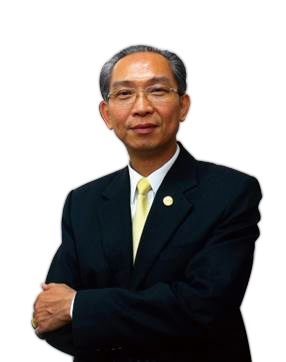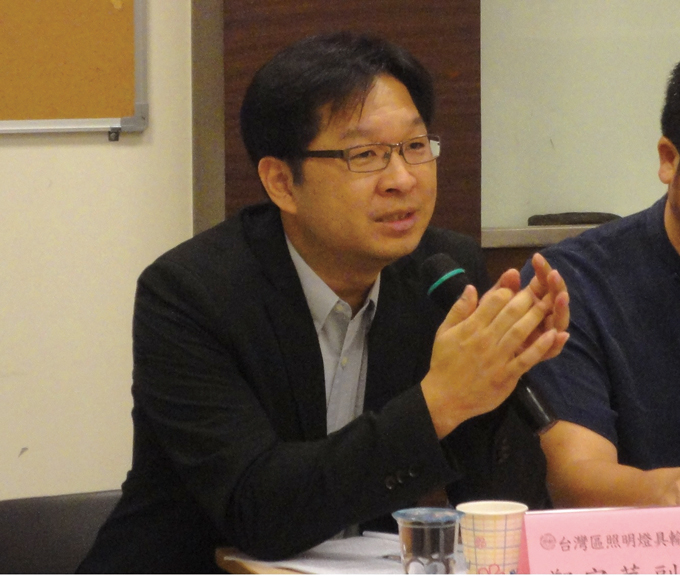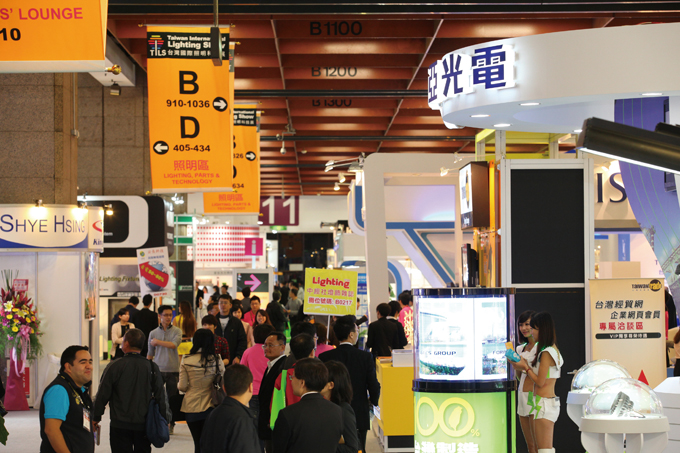New Lighting Export Association Chairman Hopes for Consolidation Of Evolving Industry
Achievement of multiple tasks will make Taiwan's lighting-fixture industry more competitive
2013/10/04 | By Ken Liu
The tasks the new chairman has set for himself are to work together with other local associations in combining their separate lighting-related shows into only one, lead his association in tapping developing markets, expand cooperation between the TLFEA and other national and international lighting organizations, urge the government to reach Free Trade Agreement (FTA) deals with major world economies, and intensify the grooming of second-generations lighting entrepreneurs on Taiwan.
Many foreign visitors to the Taiwan International Lighting Show 2013, staged in March, felt that the event was neither very international nor very big, despite the fact that the number of its booths was nearly double the 400-plus it attracted when it was held for the first time four years ago.
To boost the size and international nature of the show, Lin thinks the government should take the lead in integrating all of the island's lighting-related trade shows into a single event. “Such integration would expand the size of the single remaining show to 2,000 booths,” Lin estimates. “At one time Taiwan was known as the world's No.1 or No.2 lighting-fixture manufacturer, and now the island is the world's biggest LED maker in terms of quantity and has world-leading LED technology. By combining its strength in LEDs and lighting fixtures, Taiwan can boost its status to one of the world's top three lighting show locations.”
Moving on to a Bigger Venue
The chairman says that to boost the size of the 2014 lighting fair, his association will switch its venue to the Taipei World Trade Center's Nangang Exhibition Hall in cooperation with other 13 organizations, including the General Chamber of Commerce of the Republic of China, Semiconductor Equipment and Materials International (SEMI), Global Lighting Association (GLA), National Architect Association of Republic of China, National Association of Interior Design of Republic of China, Taiwan Thermal Management Association, Taiwan Solar Thermal Energy Association, Legislator Huang Chao-shun's Office, and China Economic News Service (CENS).
Lin stresses that the lighting industry is vital to Taiwan and that exhibitions are the most convenient platform for trade. This is why his predecessor as TLFEA chairman, C.L. Wu, relaunched the lighting fair four years ago after a 10-year hiatus. Lin notes that there are over 800 manufacturers in the upstream, midstream, and downstream sectors of Taiwan's lighting industry. In 2012 the industry had over 85,000 employees and generated approximately NT$80 billion (US$2.6 billion at NT$30: US$1) in revenue.
This is why, Lin emphasizes, “holding the lighting fair in Taiwan is very important. But it is not incumbent on the association's chairman alone to promote the fair; it's the common responsibility of the government and the whole lighting industry.”
TLFEA statistics show that the 2013 Taipei lighting fair drew 1,184 foreign buyers and 14,635 local buyers, who purchased a total of US$15.8 million worth of products on the spot and another US$54.5 million worth afterwards. Lin estimates the 2014 edition of the show will host 420 exhibitors manning around 1,000 booths. “In addition,” he predicts, “we expect the number of local and foreign buyers each to increase by 20%, and the chances of achieving that figure are pretty high.” He is confident because his association plans to spread information about the event by connecting its website to lighting association websites around the world and by disseminating it at international trade shows.
Lin notes that his association welcomes exhibitors from all over the world to participate in next year's show, including Taiwanese manufacturers operating in mainland China. “The first priority of the lighting fair is to give a boost to Taiwanese manufacturers,” he explains, “because they need a trade platform they are familiar with to help them through the industry transformation that is now going on.”

The chairman notes that most Taiwanese lighting-fixture manufacturers are moving in the direction of developing LED products, since the LED is emerging as a mainstream light source because of its energy-conservation properties. To create more business opportunities for Taiwan's LED-lighting manufacturers, the TLFEA has signed an agreement with Zhaga, an international consortium of 264 companies working on standardizing the interface for LED light engines. This gives TLFEA members privileged access to the standards organization for information on the latest light-engine specifications worked out by its members, so that they can develop lighting fixtures that is compatible with the engines.
Lin further reports, “Although the association has reached an agreement with the China Association of Lighting Industry on the co-development of industry standards for LED lighting, products made to the standards have to be accepted by international markets. Zhaga can be our door to those markets.”
Moreover, to help enhance the competitiveness of the island's LED-lighting manufacturers, the lighting-fixture association has teamed up with the Taiwan Electrical and Electronic Manufacturers' Association (TEEMA), Taiwan Optoelectronic Semiconductor Industry Association (TOSIA), Taiwan LED Lighting Industry Association, Electronic & Optoelectronic Research Laboratories of the government-backed Industrial Technology Research Institute, and SINOCON Industrial Standards Foundation in an LED modularization project. Modularizing LEDs, Lin stresses, helps trim production costs for LED lighting manufacturers because it simplifies specifications and adapts the products better for mass production.
Before the association elected Lin its chairman, it sett up a “Youth Club” under his suggestion. The aim of the club, which now has 30-plus members (including TLFEA vice chairman Peter Cheng), is to cultivate second-generation lighting entrepreneurs and pave the way for the industry's smooth transition and sustainable development.
“Taiwan's lighting industry is experiencing a transformation driven by the rapid development of high-tech light sources and Internet-based marketing platforms,” Lin comments. “To ensure the success of this transformation, Taiwan's lighting entrepreneurs need a well-prepared second generation to succeed them; the younger generation has been educated mostly in the West, which gives them an advantage in communicating with Western buyers and makes them knowledgeable about using the Internet for marketing purposes and integrating LEDs into lighting fixtures. Most first-generation entrepreneurs have humble educational backgrounds, and the second generation lacks experience in lighting manufacturing. So we feel an obligation to help the second generation learn about manufacturing.”

TLFEA vice chairman Peter Cheng feels that the foremost difference between the first- and second-generation entrepreneurs is in management philosophy and approach. “The first generation mostly makes traditional lighting fixtures and depends on brick-and-mortar stores for marketing,” he explains, “whereas the younger generation is inclined to integrate LEDs into lamp designs and utilize the Internet for marketing.”
Chairman Lin points out that each industry has its own process of technological evolution, and technology in the lighting industry is now evolving from incandescent to LED technology. He believes that the LED-lighting industry is developing in a pretty healthy direction, with light-engine makers having begun to modularize their products so that lighting-fixture manufacturers can directly plug the engines into their fixtures. Vertical integration is another healthy development for the industry, accelerating the phasing out of substandard manufacturers while allowing quality producers to cut down on their production costs.
“Modularization and vertical integration accelerate the drop in lighting-fixture costs, making the prices of LED lamps more acceptable to the mass market,” Cheng adds.
To help LED-lighting makers quickly introduce products that meet market needs, Lin has set up an industry-alliance committee within his association to provide LED-lighting manufacturers, including surface mount device (SMD) packagers, chip-on-board (COB) packagers, and power-driver manufacturers, with a platform for understanding each other's needs and then integrating their products for the market.
Lin has not slacked in his efforts to forge cooperation between the TLFEA and other national and international organizations. In addition to enhancing ties with Zhaga, the association recently entered into cooperation with the Polish Association of Lighting Industry as part of its plan to help the island's lighting manufacturers boost shipments to Eastern Europe. Lin has pinpointed helping the island's lighting manufacturers develop the ASEAN (Association of Southeast Asian Nations) market as another of his primary tasks.
“After having secured a stable position in the North American and European markets,” Lin explains, “Taiwan's lighting manufacturers now must tap developing markets. Although developing markets involve a higher risk than developed markets do, they are still worth developing. The economies of Indonesia, the Philippines, and Vietnam, for instance, are growing briskly. All of these nations are within just four flying hours from Taiwan, so it's quite convenient for Taiwanese manufacturers to reach them.”
However, Taiwan's lighting manufacturers can hardly compete with international competitors that enjoy tariff-free treatment under FTAs that their governments have signed with ASEAN governments. Lin urges the Taiwan government, therefore, to sign FTAs with other economies around the world as quickly as possible so that Taiwanese manufacturers operating overseas will be inspired to move production back to the island.




